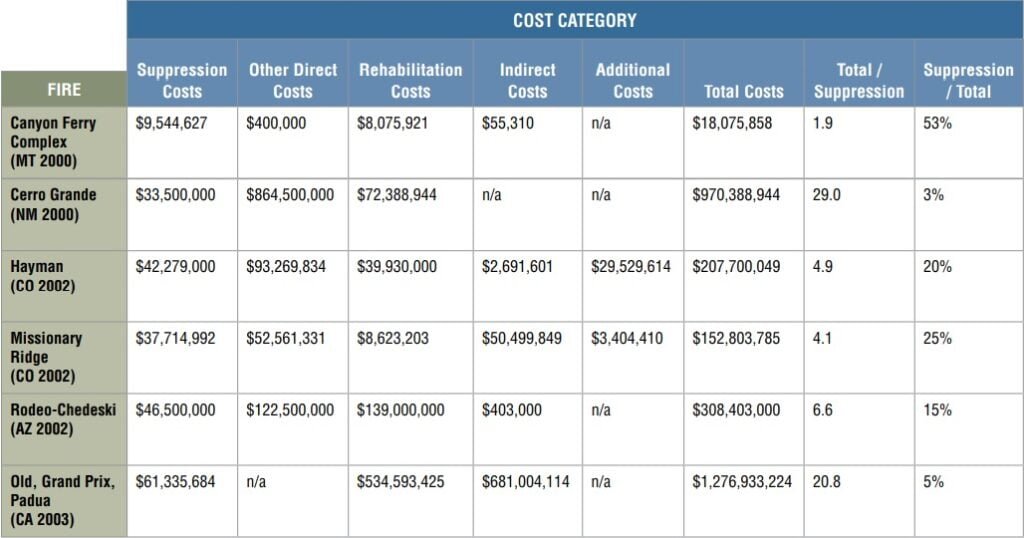We all hear the ever-increasing cost of putting out wildfires. This is the headline cost that continues to grow each year. In California, this is the cost that we hear grow each year as the ferocity of forest firs continues to increase. The 2020‑21 budget includes $2.5 billion for CalFire, most of which—$2.1 billion—is for wildfire response. However, this cost is the tip of the iceberg. The real cost of forest fires and the implications of wildfires are much greater.
As the cost of suppression continues to grow, the overall post-fire costs also rise. Let’s take a look at some of the additional costs that need to be factored into the real cost of forest fires.
Direct Costs
These are the easiest to measure. The basic components of fighting wildfires include local, state, and federal costs. Personel, transportation, and logistic costs of mounting operations. Aviation and supply costs. Other direct costs which can be factored in, but are often not directly reported include:
- Property losses, both private and public, insured and uninsured
- Damage to infrastructure, utility lines
- Loss of timber resources
- Evacuation costs and support
Rehabiliation Costs
This includes short and long-term rehabilitation costs. Immediate stabilization of the landscape, followed by reforestation. Longer-term rehabilitation is harder to manage, including damage to watersheds, impacts of weather on unstable land, including flooding and mudslides.
Indirect Costs
Long after the fire has been extinguished the effects of fire can continue to cost These include long-term health costs. Loss of tax base from property and lumber as well as impacts on property values. Recreation loss can have long-term business impacts on the local communities. These costs are often not reported and are difficult to track.
Additional Costs
There are some things that are very difficult to place a price on. The loss of human life. Even though each human loss, whether a firefighter or civilian, actuaries have cost tables for death and injuries. Payments are made to families. The cost of loss of life is incalculable but these estimates help to build in additional costs that are easily overlooked.
There have been studies to try to calculate the real cost of forest fires. The BLM provided the following data for several fires:

It’s clear that the overall suppression cost, which is what is generally what is reported, is often only a fraction of the true cost of forest fires. This is well documented. Of course, this burden at the end of the day falls on the taxpayer and the use of taxpayer resources.
A better way to spend money
“An ounce of prevention is worth a pound of cure,” as Benjamin Franklin said. This is never more true than if the cost of forest fires. The cost of forest management and the hardening of communities is far less.
“The true cost of wildfires is much higher than the public is aware of, and much higher than currently accounted for by government assessments. These costs have increased significantly in the last decade, impacting taxpayers and multiple levels of government. The cost of wildfires also accrues over time — sometimes as much as a decade after the incident. Investments to mitigate the potential damage to communities and ecosystems from wildfire have not risen to meet these increasing costs.”
REDUCE WILDFIRE RISKS OR PAY MORE FOR FIRE DISASTERS
The International Association of Wildland Fire
At CSFM we believe it is critical to invest money in proven forest management principles. Spending this money upfront will not only be a cost-saving in real terms but will also prevent the continued destruction of vast areas of forest, habitat, and communities.
